George Takei on his childhood in internment camps — and his faith in the future
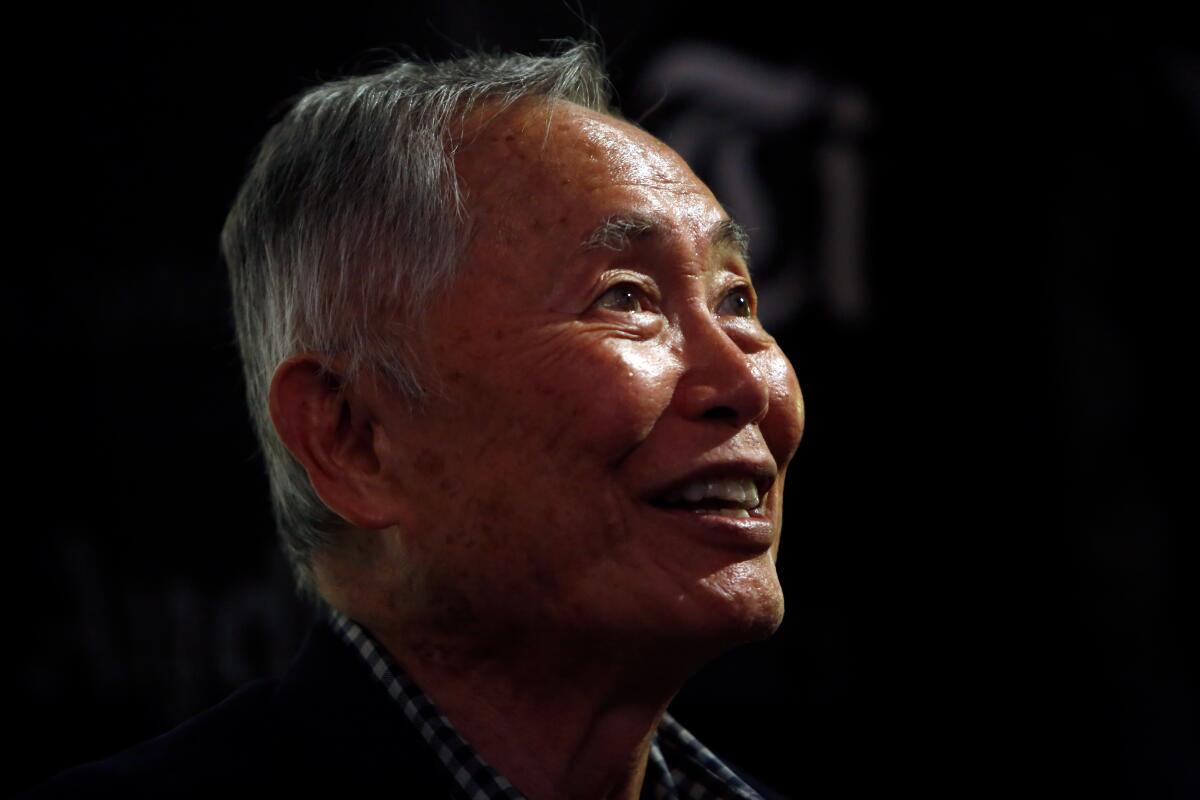
- Share via
Actor George Takei says he’s determined to keep talking about the imprisonment of his family and 120,000 other Japanese Americans during World War II because he wants a new generation to know what happened and fight similar injustices today.
On Tuesday night, Takei recounted the morning his father abruptly woke him and his younger brother to get dressed and pack. They were going on vacation, his father explained to 5-year-old Takei as his mother bundled up his baby sister and the few belongings they could carry.
Armed soldiers forced Takei’s family from their Boyle Heights home and imprisoned them in a Santa Anita racetrack horse stall that reeked of manure.
“I thought everyone went on vacations escorted by soldiers,” Takei told the Los Angeles Times Book Club at the Montalbán Theatre.
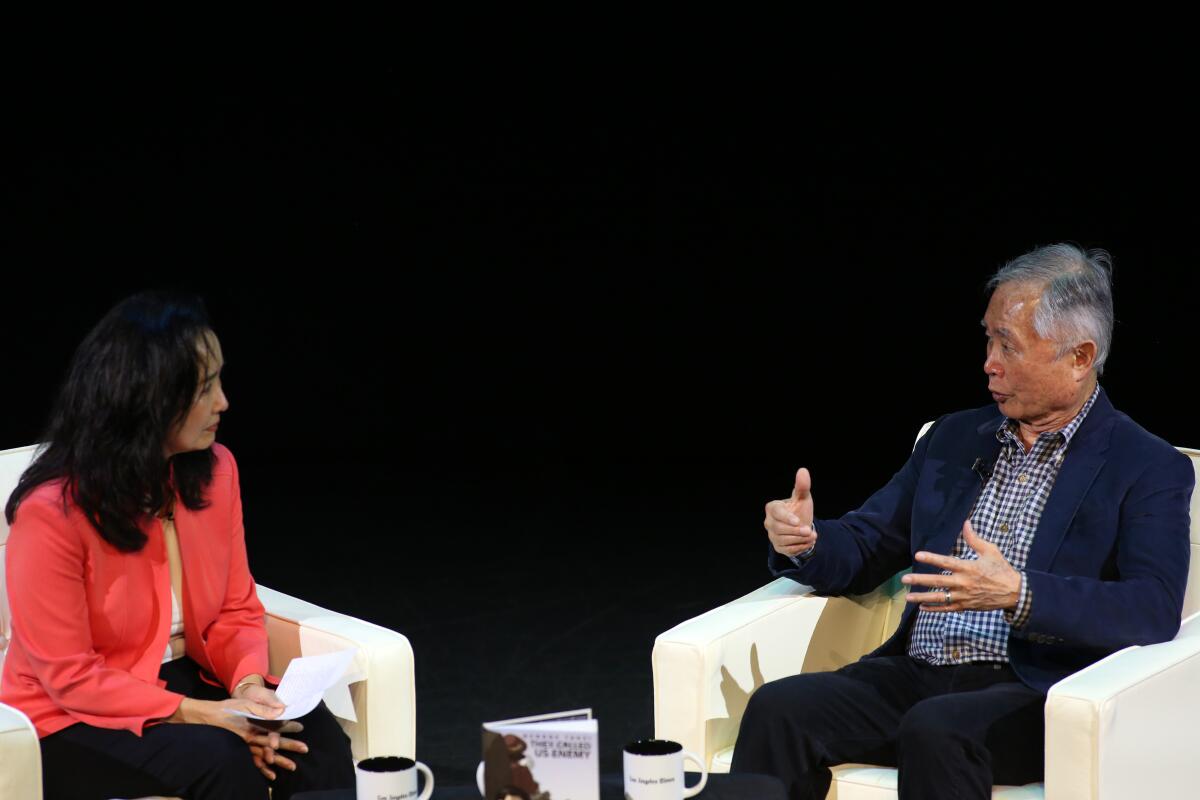
Takei and his family were shipped to internment camps in Arkansas and Northern California, spending four years behind barbed wire. His new graphic memoir, “They Called Us Enemy,” is told through the eyes of a child growing up incarcerated, detailing the day-to-day hardships and humiliating experiences of the camps.
In his conversation with reporter Teresa Watanabe, Takei described the effect the camps had on his life and the importance of his role as helmsman Hikaru Sulu on the original “Star Trek” TV series.
Watanabe asked him: How did you heal from this experience? Or have you healed?
“It has shaped me,” Takei responded. “As a teenager I learned about the internment and the injustice. My father said, ‘You have to actively participate.’ It was the internment and my father’s good guidance that made me the activist that I am.”
Takei said his father maintained an unwavering faith in American democracy, despite the family’s imprisonment. So much so, he took teenage Takei to volunteer at Adlai Stevenson’s presidential campaign headquarters in downtown Los Angeles during the 1950s. Stevenson lost the race, but his father said, “In a people’s democracy, you keep on keeping on.”
When an audience member asked what it’s going to take for history to stop repeating itself, Takei echoed his father: participation.
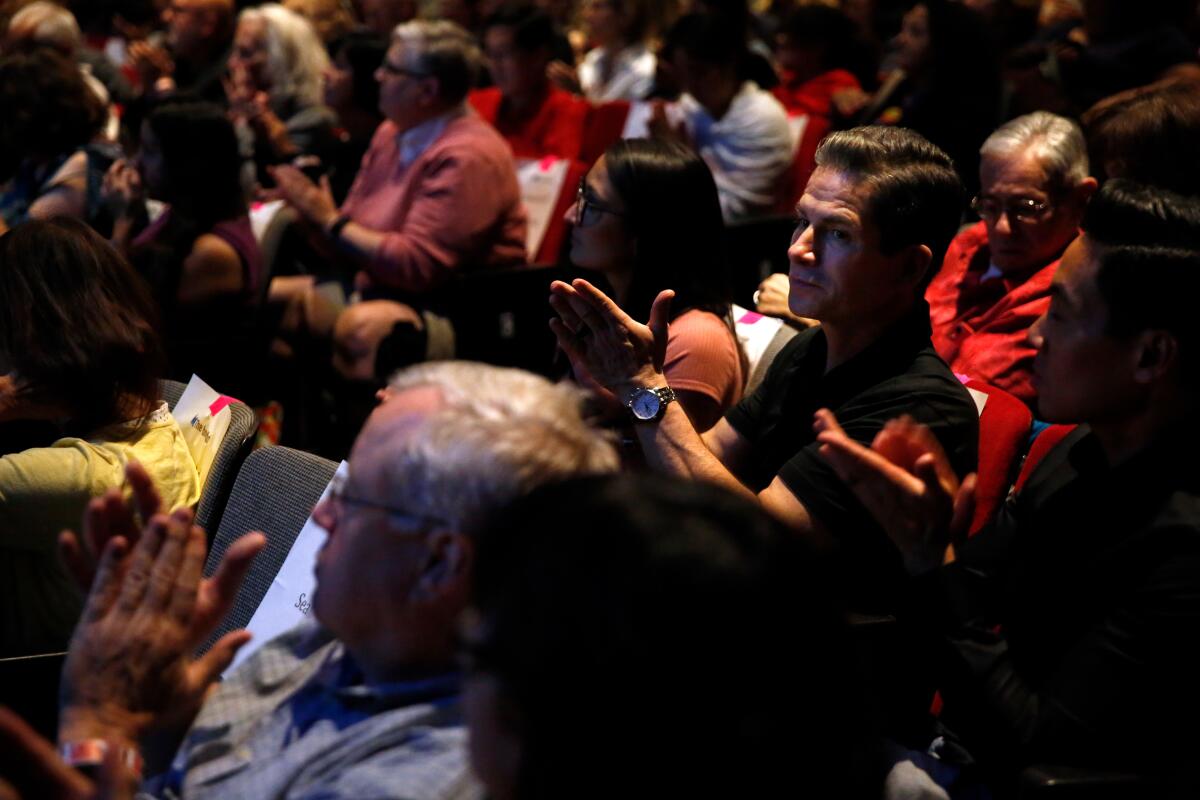
“In 2016, we had an election where some people decided not to vote. You have to be more sophisticated than that,” he said, adding that the people who stayed home because they didn’t like Hillary Clinton allowed Donald Trump to get elected.
At 82, Takei is reliving the World War II era in his role on “The Terror: Infamy,” an AMC series set in a Japanese American community. The story takes place in a fishing village on Terminal Island near San Pedro, following Japanese immigrants and their U.S.-born children as a spirit haunts them through the war. Takei plays Yamato-san, the community’s elder statesman.
He’s also a force on social media. Takei attributes his 2.9 million followers on Twitter to his tongue-in-cheek approach to politics. He uses the networking platform to advocate for the LGBTQ community, refugees detained on the U.S. southern border, and other causes.
That visibility on social media and in popular culture is important to Takei. “We were incarcerated [partly with the help of] the stereotypes and the images that were sold to the American public by the media — radio shows, movies, stage shows, comic books.”
Takei noted that his groundbreaking role as Mr. Sulu on “Star Trek” put a Japanese American actor in a leading role in prime time TV when the show first aired in 1966. The Starship Enterprise was a model of inclusion at the time, he said, with an African American communications officer played by Nichelle Nichols and even a bridge officer with a Russian accent at the height of the Cold War.
An audience member asked Takei about Nichols, who played Lt. Uhura during the show’s three-year run. Nichols planned to leave the show after the first season, but Martin Luther King Jr. persuaded her to stay in the role.
“There was no other person representing what she represented,” Takei said. “That was an important statement that Dr. King made to her. I was mindful of the role that I played because we didn’t have opportunities like that before — to play one in the leadership team and to be in a futuristic utopian vision of our future.”
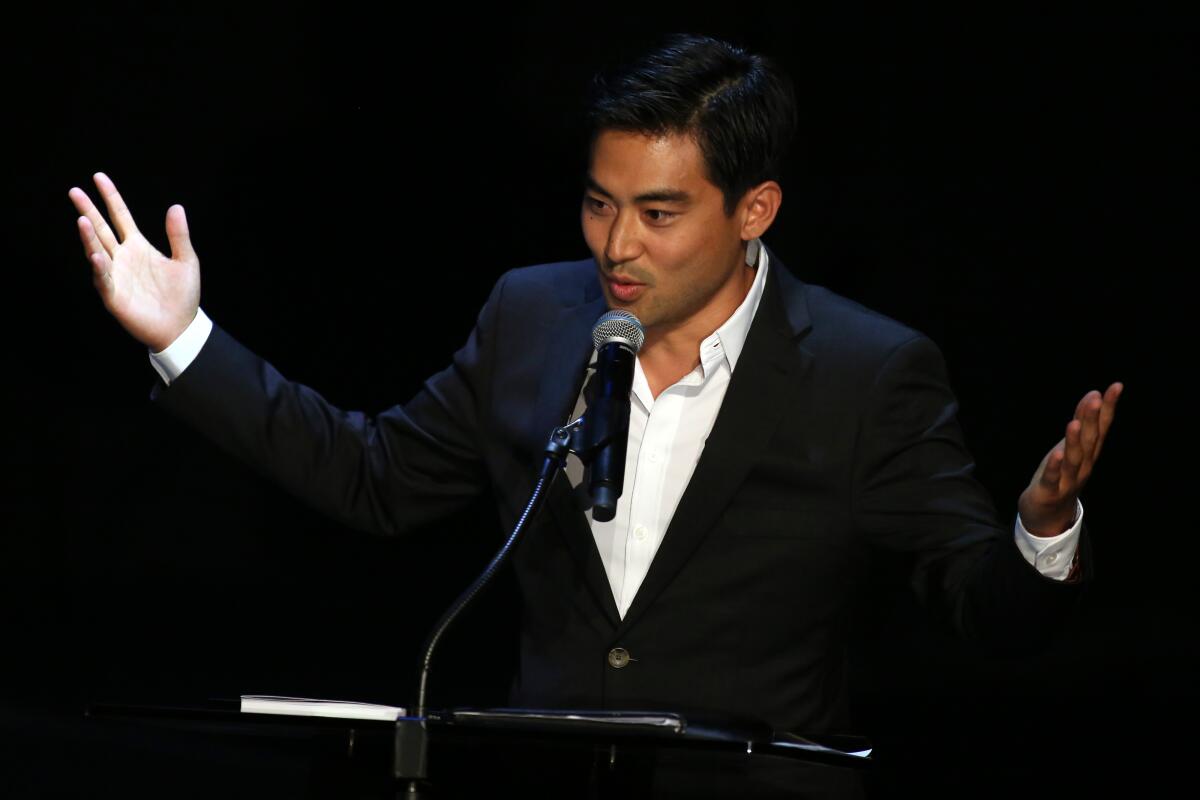
Two guest speakers also took the stage to share their thoughts on Takei’s graphic memoir.
Actor Derek Mio, who stars with Takei in “The Terror: Infamy,” read a passage in which “Star Trek” creator Gene Roddenberry offers Takei his role, impersonating Takei’s signature cadence.
“It takes people in positions of power to greenlight these sorts of things,” Mio said.
Times arts and culture editor Craig Nakano said he was drawn to passages in “They Called Us Enemy” in which Takei describes seeing the first snowfall as “pure magic” and decorating a Christmas tree while being surrounded by barbed wire. For Nakano, those moments were tinged with a quest for normalcy within the camps — which echoed his own parents’ stories of the internment camps.
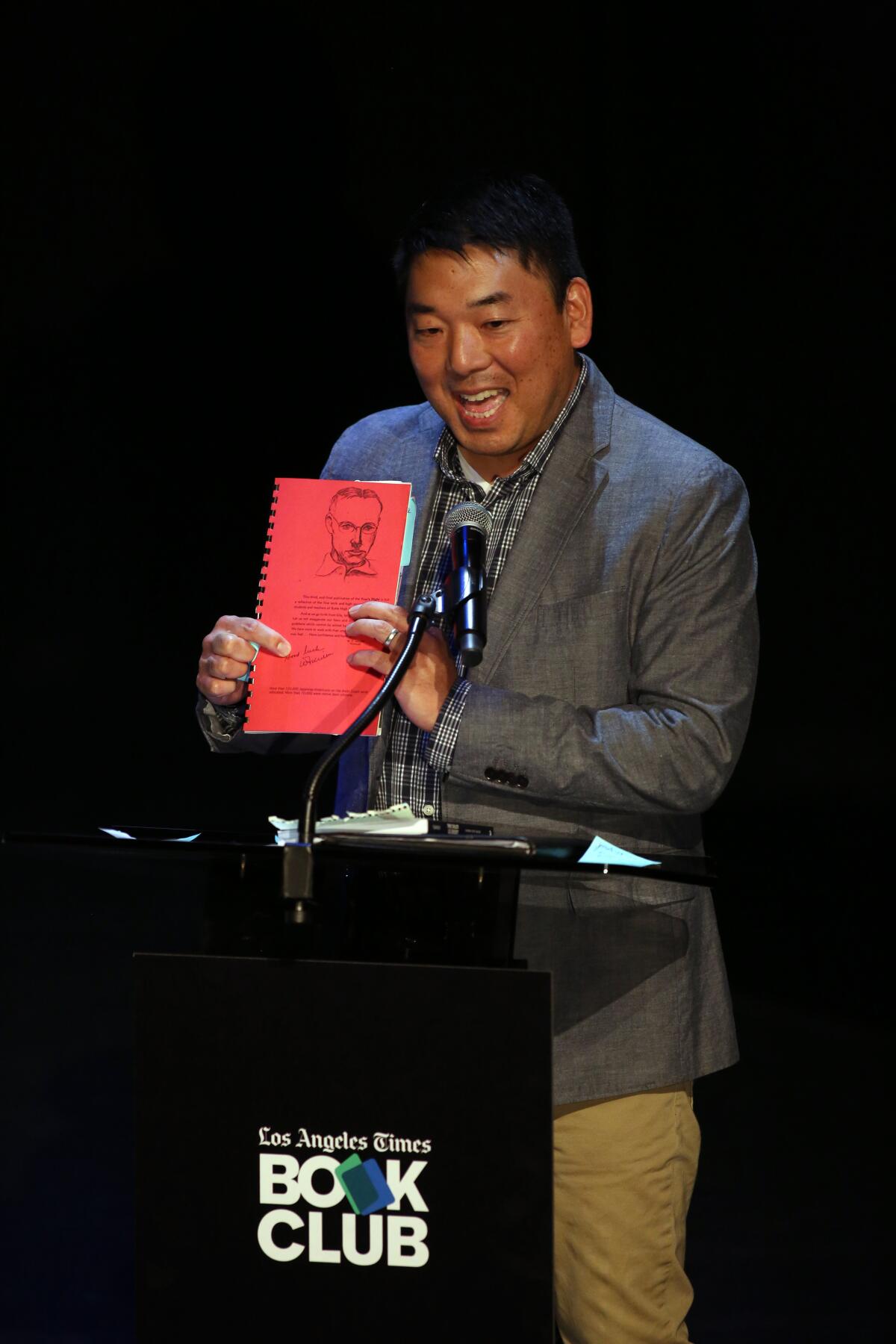
Nakano shared pages from his father’s 1945 internment camp yearbook with photos of the forensics club, student band, Girl Scouts and basketball team. The yearbook included the high school principal’s letter to the students as the closure of the camps was approaching: “And as we go forth from Gila, let us have faith in the future. Let us not exaggerate our fears and difficulties.”
Takei said the yearbook reminded him of what his father used to say: Resilience isn’t just a muscle flexing strength, it’s also the strength to create joy under tough circumstances.
The next Los Angeles Times Book Club event is Oct. 21 with bestselling author Michael Connelly in conversation with Times reporter Jeffrey Fleishman about “The Night Fire,” the latest installment of the series featuring Detective Harry Bosch. For updates, sign up at latimes.com/bookclub.
Update: On Nov. 18, Julie Andrews will discuss her memoir “Home Work” in an event hosted by the book club and the Times Ideas Exchange.
More to Read
Sign up for our Book Club newsletter
Get the latest news, events and more from the Los Angeles Times Book Club, and help us get L.A. reading and talking.
You may occasionally receive promotional content from the Los Angeles Times.








